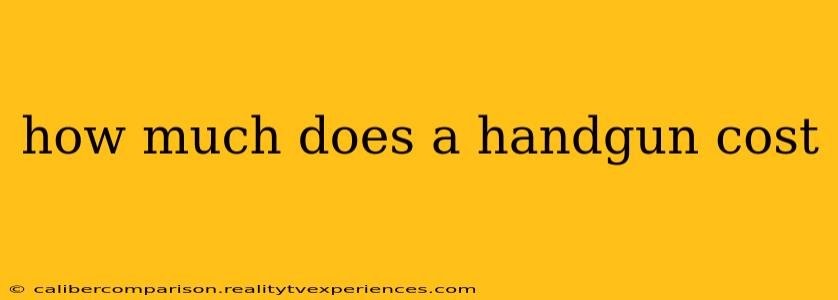The cost of a handgun can vary dramatically, ranging from a few hundred dollars to several thousand. Understanding the factors influencing price is crucial for making an informed purchase. This guide breaks down the different price points and what influences them, helping you navigate the handgun market effectively.
Factors Affecting Handgun Prices
Several key factors contribute to the wide range in handgun costs:
1. Brand and Reputation:
- Established Brands: Well-known brands like Glock, Smith & Wesson, Sig Sauer, and Beretta often command higher prices due to their reputation for reliability, quality, and innovation. These companies invest heavily in research and development, resulting in advanced features and consistent performance.
- Boutique Manufacturers: Smaller, specialized manufacturers may offer unique designs and craftsmanship, leading to premium pricing. These handguns often feature handcrafted components and bespoke features, justifying the higher cost.
- Import vs. Domestic: Handguns manufactured domestically (e.g., in the USA) may have a higher price tag compared to imported firearms, primarily due to labor and manufacturing costs.
2. Type and Caliber:
- Caliber: The caliber (size of the bullet) significantly impacts the price. Popular calibers like 9mm and .45 ACP are generally more affordable due to higher production volume. Less common calibers will be more expensive.
- Type of Handgun: Different types of handguns, such as revolvers, semi-automatic pistols, and single-action pistols, have varying manufacturing processes and material costs. This directly influences their pricing. For example, a high-end 1911 .45 ACP will typically cost more than a basic 9mm polymer-framed pistol.
3. Features and Materials:
- Materials: The materials used in construction affect the price. Polymer-framed handguns are generally cheaper than those made from steel or other high-strength metals like stainless steel or titanium. Likewise, high-quality finishes (e.g., Cerakote) will add to the overall cost.
- Features: Advanced features like night sights, optics-ready slides, ambidextrous controls, and specialized triggers all contribute to a higher price point. These added features enhance functionality, accuracy, and user experience.
4. Condition:
- New vs. Used: Buying a used handgun can significantly reduce the cost. However, careful inspection is critical to ensure the firearm is in good working order and safe to use. Consider getting a professional inspection if you are not familiar with firearms.
Price Ranges: A General Overview
While prices can fluctuate, here's a general idea of what to expect:
- Budget-Friendly (<$500): Basic, often polymer-framed handguns in common calibers. These typically offer reliable performance but may lack some of the features found in higher-priced models.
- Mid-Range ($500 - $1000): A wide range of options, including more advanced features, higher-quality materials, and reputable brands.
- High-End ($1000+): High-quality materials, custom features, precision craftsmanship, and often specialized designs. These handguns are often favored by serious shooters and collectors.
Conclusion: Making an Informed Decision
The cost of a handgun is a significant factor, but it's crucial to prioritize safety and reliability. Thorough research, considering the factors outlined above, and seeking advice from experienced firearm professionals will ensure you make an informed and responsible purchase. Remember to factor in the costs associated with ammunition, training, and storage when budgeting for a handgun. Always comply with all local, state, and federal laws regarding firearm ownership and handling.

